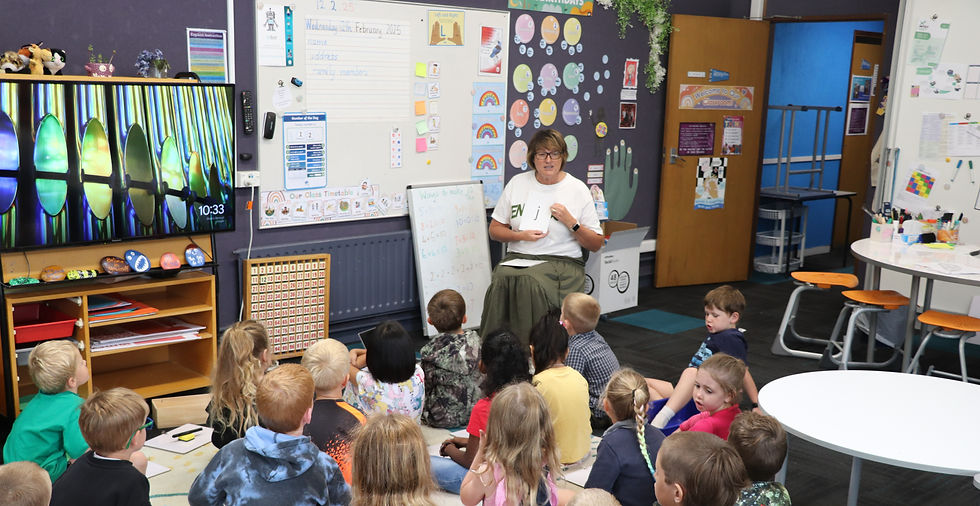
INFORMATION FOR PARENTS
If your child is away from school please notify us either by:
Texting the school phone 027 399 6143
Using the Hero App
Emailing a message to office@lumsden.school.nz
Visiting or phoning the office
Assembly is held in Room 2/3 every Friday at 2.30pm. The children present class items, school and sports reports, as well as singing. Everyone is most welcome to attend.
Kia ora koutou,
We would like to share some important information about how our school transport network operates and the role of EasyBus in supporting it.
Our School Transport Network
Our school is part of a wider transport network that brings together the four schools in our area. This network has been established to ensure safe, reliable, and efficient travel for students to and from school. By working collectively, schools can provide better coverage, coordinate routes more effectively, and respond more quickly to the needs of families.
The Role of EasyBus
To make this possible, our network is managed with the support of EasyBus, a specialist organisation that assists schools with the day-to-day running of bus services. EasyBus provides the systems that help us organise routes, manage student bus lists, and ensure buses are operating safely and on time. Their role is to give schools the tools and support we need so that we can focus on teaching and learning, while transport is managed professionally and efficiently.
Reporting Concerns and Events
Keeping our students safe and ensuring our bus services run smoothly is a responsibility we all share. If you ever have a concern, notice an issue on a bus, or wish to report an incident, you can do so directly through our online reporting system at:
This system makes sure that any events or concerns are logged quickly and sent to the right people for follow-up. Whether it’s a safety issue, behaviour concern, or general feedback, your input helps us maintain a high standard of service for all families.
Working Together
We encourage all parents, caregivers, and students to use this system whenever something arises. By working together, we can ensure that school transport remains safe, reliable, and supportive of our students’ learning journey.
Greig Neilson
Network Manager
EasyBus
Friends of the School is a parent group supporting all aspects of school life. Formalities are kept to a minimum with sub committees often working on specific tasks. These include—Grounds, Fundraising, Education, Catering and Social. We invite families to indicate which sub group they would like to be involved in at the beginning of each year. Please join our Facebook Group to get more information.
For instant messaging to all parents, the school will send out messages via the HEROApp (e.g. in event of school closure due to snow, alerts and reminders) which you will receive via your phone. If you would be unable to receive these messages, e.g. you have cellphone reception issues, please contact the school so that you can be added to a separate phone list.
To download this free App, from your mobile device go to the App Store (iPhone/iPad) or Google Play (Android) search for HERO and download the App to your phone. Make sure you agree to push notifications. Once HERO has finished installing, open the App, type Lumsden School in the search.
Monthly Board meetings are held on Tuesday evenings in week 3 and 9 each term.
WHO ARE YOUR BOARD MEMBERS?
Lilly Humphries (Presiding Member), Angela Reid, Kylie Symister, Katie Williams, Noortje Hamers, James McDouall, Ziggy Roy (Staff Rep.), Ang Sheat (Principal).
Board Contact: botchair@lumsden.school.nz
School Docs
We have signed up to the School Docs platform, along with around 2000 other NZ schools. School Docs is an online policy platform for schools. Our SchoolDocs site contains policies and procedures that are specific to Lumsden School and can be accessed by the whole school community.
SchoolDocs updates, modifies or creates policies in response to changes in legislation or Ministry guidelines, significant events, reviews/requests from schools, and regular reviewing from the SchoolDocs team.
Each term we will have policies that need to be reviewed.
As a parent, you can be part of this process by:
Logging into the School Docs site: https://lumsden.schooldocs.co.nz
Username: lumsden
Password: community
Clicking on the Parents’ Quick Links Tab to find any of our policies, or click on Current Review Tab to have your input into the Lumsden School Policies.
Once you have clicked on the Current Review Tab, you can choose which Policy you wish to review and click on it.
Then click the Start your review button and follow the prompts.
